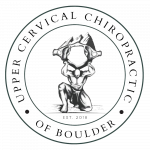What is Whiplash?
You may hear the term whiplash thrown around a lot when it comes to automobile accidents. Whiplash occurs when the head “whips” forward and backward with force due to an impact in a car crash. These sudden, jerky movements can damage the soft tissue in the neck, resulting in discomfort or pain.
Whiplash is a common injury, even in relatively minor crashes. Mild cases may clear up within a few weeks. Some people who have had whiplash may not be so lucky, and pain may continue for months, or years, after an accident.
Signs and Symptoms of Whiplash
Some people in car accidents do not experience any immediate pain. Hours or days later, however, they may notice symptoms. Other people may have pain right away. Whether whiplash pain is immediate or delayed, it should not be ignored.
The pain may make the neck and/or upper back feel stiff and achy, or you may experience more severe pains. Sometimes the pain will come and go, and for some people, it will be constant, nagging pain.
For some people, whiplash can cause numbness or tingle in the neck, back, shoulders, or arms. Pain may also radiate down the arms. You may lose some range of motion, and have trouble turning your head or lifting your arms.
Whiplash can also cause headaches and fatigue. You may have bouts of dizziness, blurred vision, or difficulty chewing. You may find yourself having trouble concentrating, there may be some memory loss, or speech impediments may occur in more serious cases.
How the Upper Cervical Spine Affects Whiplash
Whiplash directly impacts the upper cervical spine, which consists of the uppermost seven vertebrae that run down the neck. The weight of the head as it whips back and forth can put such stress on this vulnerable part of the spine that it may cause a misalignment of the vertebrae.
Misalignments can lead to inflammation, swelling, tears in the ligaments, or compressed nerves. Without treatment, symptoms may continue indefinitely, or may even become worse over time.
How Our Upper Cervical Treatment for Whiplash Works
Dr. Christina Coblish and Dr. Ryan Moeskau of Upper Cervical Chiropractic of Boulder are upper cervical spine specialists and experts in the Blair Chiropractic Technique. The Blair technique is a modern technique that combines advanced technology and gentle corrections to get to the root of the problems caused by whiplash.
The doctors use state-of-the-art 3D diagnostic imaging tools to assess the health of your upper cervical spine and to target any problem areas. Once calculations are made based on your unique anatomy, the doctors then use low-pressure, swift, non-invasive techniques to gently and precisely restore alignment to the vertebrae.
Once the upper cervical spine is properly realigned, it will bring relief. It will also allow the body’s natural healing processes to take over so that you will continue to heal and improve over time.
If you suffered from an injury and think whiplash may have caused damage to your neck, don’t take any risks by putting off treatment. Call us for a consultation. We offer services in Boulder, Longmont, Louisville, Erie, Lafayette, Broomfield, and Denver in Colorado.


